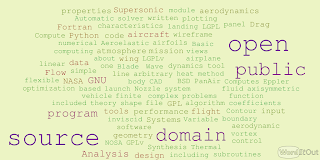Fortran Program Poisson Distribution
Fortran 90 and HPF Programs Fortran 90 and HPF Programs Related to the Book Book Title: Author: Publisher: Publication Place: New York Publication Date: September, 1997 ISBN's: 0-521-48143-0 (hardback); 0-521-48592-4 (paperback) List Prices: $110 (hardback); $42.95 (paperback) Other Info: 393 Pages; 7 x 10; 30 Line Diagrams; 5 Tables; 94 Exercises; Bibliography and Index Please Note: • All the Fortran 90 programs listed here are corresponding to the Fortran 77 programs appeared in or related to the book. Several programs (as indicated) have appeared in the book, which are copyrighted by Cambridge University Press. Some changes are made in order to take advantage of Fortran 90. • No warranties, express or implied, are made for any materials at this site. Introduction •: One-dimensional motion under a harmonic force.
Basic Numerical Methods •: Lagrange interpolation with the Aitken method. •: Lagrange interpolation with the upward/downward correction method. •: Orthogonal polynomials generator. •: Millikan experiment fit. •: Millikan experiment with a direct linear fit.

•: Derivatives with the three-point formulas. •: Integration with the Simpson rule. •: Root Search with the bisection method. •: Root Search with the Newton method. •: Root Search with the secant method. •: Bond length of NaCl.
The compilers own random number generator, SUBROUTINE RANDOM_NUMBER(r),! Is used to provide a source of uniformly distributed random numbers.! Adapted from the following Fortran 77 code! Mu -->The mean of the Poisson distribution from which! A random deviate is to be generated. Fem2d_poisson_rectangle, a program which. How a FORTRAN77 program can call. The Student T distribution; this is a FORTRAN77 version of.
•: Classical scattering. •: Uniform random number generator. •: Exponential random number generator. •: Gaussian random number generator. •: Two-dimensional percolation.
Ordinary Differential Equations •: Simplest predictor-corrector scheme. •: Pendulum solved with the fourth order Runge-Kutta algorithm. •: Boundary-value problem solved with the shooting method. •: Simplest algorithm for the Sturm-Liouville equation. •: The Numerov algorithm from Eqs. •: The Numerov algorithm from Eqs.
•: An application of Program 3.A. •: Eigenvalue problem of the 1D Schroedinger equation. Numerical Methods for Matrices •: The partial pivoting Gaussian elimination scheme. •: Determinant evaluated with the Gaussian elimination scheme. •: Linear equation set solved with the Gaussian elimination scheme. Program Handycafe 2.1.32 Crack.
•: Matrix inversion with the Gaussian elimination scheme. •: Determinant polynomials generator. •: Random matrix generator. Spectral Analysis and Gaussian Quadrature •: Discrete Fourier transform.
•: Fast Fourier transform. Font Tahomabd.ttf. •: Power spectrum of a driven pendulum. •: Fast Fourier transform in two dimensions. •: The Legendre polynomials generator. •: The Bessel functions generator. Partial Differential Equations •: The bench problem.
•: The relaxation scheme for one dimension. •: Ground water dynamics. •: The time-dependent temperature field. Molecular Dynamics •: Halley's comet studied with the Verlet algorithm. •: The Maxwell velocity distribution generator. Modeling Continuous Systems •: A simple example on finite element method.
Monte Carlo Simulations •: An example with random sampling. •: An example with importance sampling. High-Performance Computing •: Polar coordinates to rectangular coordinates conversion (appeared in the book). •: Array examples in Fortran 90 (appeared in the book). Installing Ferrari Hinges. •: Module examples in Fortran 90 (appeared in the book). •: HPF code for 2D Poisson equation with the relaxation scheme (appeared in the book). •: An example of communication in MPI environment (appeared in the book).